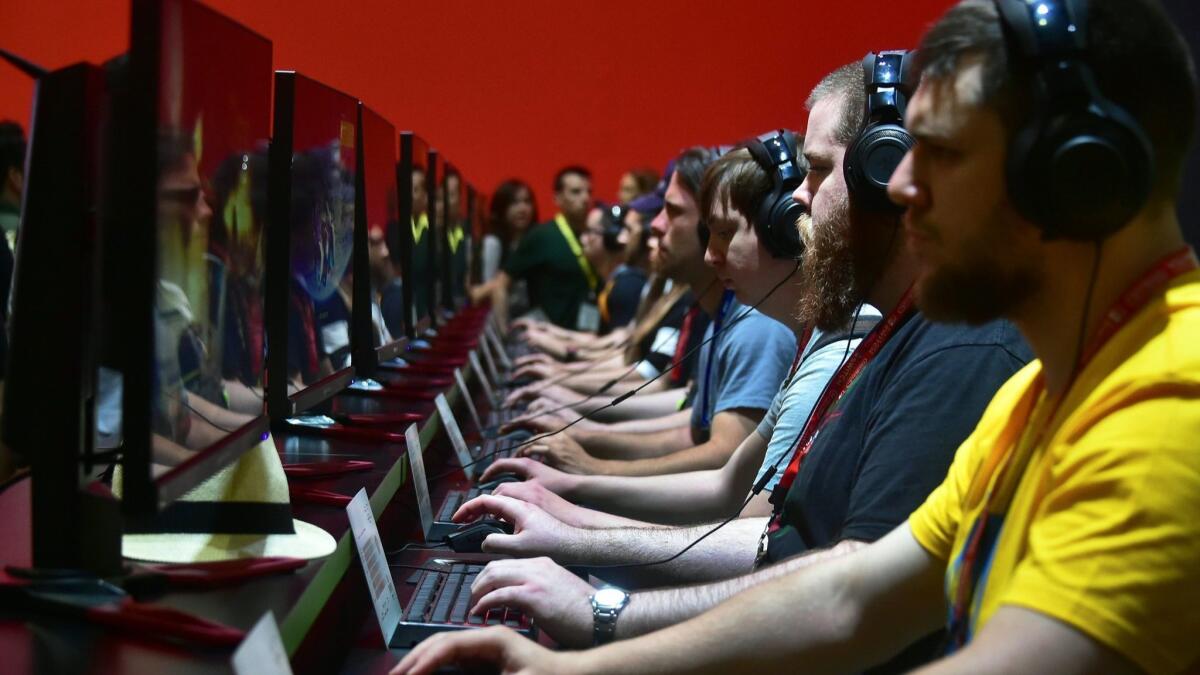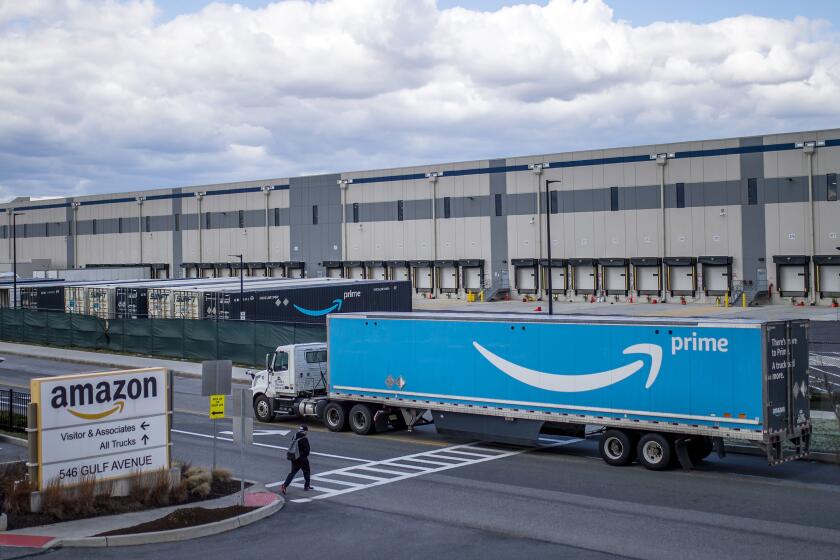Cryptocurrency miners’ demand for Nvidia computer chips evaporates

- Share via
Nvidia Corp.’s nine-month crypto gold rush is over.
Sales of graphics chips to miners of cryptocurrencies such as ethereum dried up faster than expected, the Santa Clara company said. For a second quarter in a row, investors ignored Nvidia’s growth in its main markets and ditched the stock.
Nvidia’s stock fell 4.9% to $244.82 a share Friday.
“Our core platforms exceeded our expectations, even as crypto largely disappeared,” founder and Chief Executive Jensen Huang said Thursday on a conference call. “We’re projecting no cryptomining going forward.”
The mining of cryptocurrency tokens, computer code that carries value in online transactions, had helped stoke demand for graphics chips. These types of processors excel at making multiple small calculations at the same time, the type of capability that’s well-suited for the creation of ethereum and other cryptotokens. That helped boost demand for the Nvidia’s GeForce chips that are so prized by gamers for the realism they produce. The demand forced up prices and caused shortages.
Nvidia said it had expected about $100 million in sales of chips bought by currency miners in the fiscal second quarter. Instead, the total was $18 million in the period, and that revenue is likely to disappear entirely in future quarters, the company said.
As cryptocurrency prices fall, miners look for other things to do with their server farms »
Investors are expressing their concern at the sudden collapse of what had looked like a billion-dollar business. Three months ago, Nvidia said it generated $289 million in sales from cryptocurrency miners, but warned that demand was declining rapidly and might fall by as much as two-thirds. Even that prediction was too optimistic.
Revenue in the fiscal third quarter will be $3.25 billion, plus or minus 2%, Nvidia said. That would fall short of analysts’ average estimate of $3.35 billion, according to data compiled by Bloomberg.
The company’s main businesses are doing “terrific” and Nvidia continues to show strong growth on a year-over-year basis, Huang said. The benefit from cryptomining — which kicked in only three quarters ago — was unusual and has skewed comparisons, he said.
Even though crypto-related revenue came in far short of the company’s forecasts, sales surged to a record $3.12 billion in the quarter that ended July 29. Analysts on average expected $3.11 billion.
Huang is reshaping his company to take advantage of trends that are changing computing. He has convinced owners of data centers that modified graphics chips are the best way to handle the surge in artificial intelligence processing that is fueling the growing use of voice and image recognition.
This week, Huang unveiled a new, more powerful chip architecture that he said will help Nvidia gain more share in computer-intensive industries such as movie special effects and automotive design. Turing, as it’s called, will also make its way into gamer- and data-center chips.
While data-center chips now account for a fifth of revenue and are increasingly a driver of overall growth, the company still gets most of its profit from its GeForce graphics processors. Growth in that market relies on Nvidia’s ability to persuade gamers they need the latest chip to make their experience ever more realistic. The prospect of the new design coming this year may be causing some to hold off on purchases.
Analysts asked the company’s executives to explain why inventory surged. Nvidia ended the quarter with $1.09 billion of unsold parts, up from $797 million three months earlier. Huang said that represents primarily a buildup of cheaper chips that will get sold in computers being manufactured for the back-to-school shopping season.
Still, Nvidia reported that sales from gaming rose 52% to $1.8 billion in the second quarter. Data-center revenue increased 83% to $760 million. Both areas topped analysts’ estimates.
Nvidia had a profit of $1.1 billion, or $1.76 a share, in the second quarter, compared with $583 million, or 92 cents, in the same period last year.
With the quarter’s results, Nvidia revenue is on course to more than double from 2016. Investors have been attracted to the stock, pushing shares up 26.5% this year compared with a 5.6% advance by the Philadelphia Stock Exchange Semiconductor Index.
UPDATES:
2:10 p.m.: This article was updated with Friday’s stock movement.
This article was originally published at 10:05 a.m.
More to Read
Inside the business of entertainment
The Wide Shot brings you news, analysis and insights on everything from streaming wars to production — and what it all means for the future.
You may occasionally receive promotional content from the Los Angeles Times.










